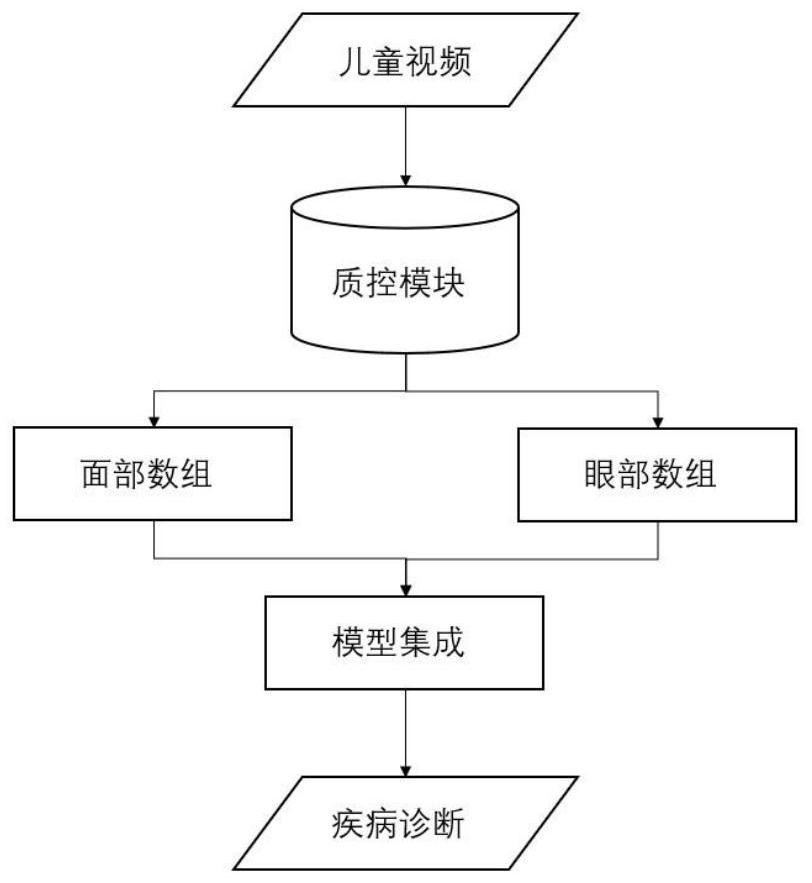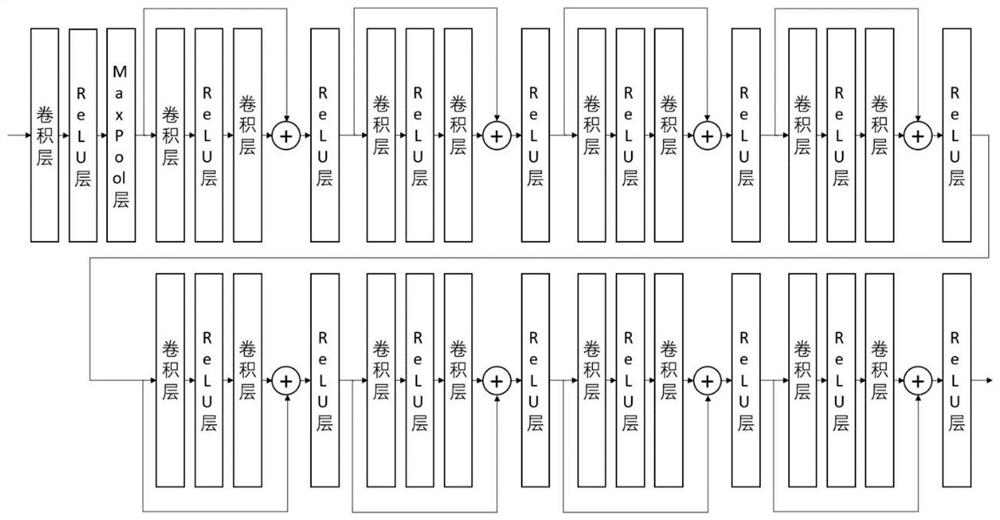Children visual impairment screening system and method based on deep learning algorithm
A vision impairment, deep learning technology, applied in the field of pediatric vision impairment screening system, can solve problems such as inapplicability and lack of video quality control modules
- Summary
- Abstract
- Description
- Claims
- Application Information
AI Technical Summary
Problems solved by technology
Method used
Image
Examples
Embodiment 1
[0111] According to a method for screening children with visual impairment based on deep learning algorithm provided by the present invention, comprising:
[0112] Step M1: Obtain a video of a child's upper body;
[0113] Step M2: Analyze the video in real time, use the quality control algorithm to extract high-quality segments in the video that meet the preset requirements, and use the key point information of the face to cut out high-quality facial segments and eye segments;
[0114] Step M3: using face segment information and eye segment information to train the face classification network and eye classification network respectively until the loss function converges, and obtain the trained face classification network and eye classification network;
[0115] Step M4: Use the trained face classification network and eye classification network to encode each face array and eye array to obtain the corresponding probability of suffering from eye diseases;
[0116] Step M5: Integ...
Embodiment 2
[0208] Embodiment 2 is a modification of embodiment 1
[0209] Step 1: Take a video of the child's upper body with the smartphone's front-facing camera.
[0210] Step 2: Analyze the video in real time, and use the quality control algorithm to extract high-quality clips in the video.
[0211] Step 3: For each extracted high-quality segment, use the video classification network to give the label of whether the child is healthy or not and the corresponding probability.
[0212] The quality control algorithm proposed in the step 2 includes the following steps:
[0213] Step 2.1: Extract the input video frame by frame to form a series of video frames.
[0214] Step 2.2: Input the extracted video frame into the face key point extraction network, and the quality control network gets the key point information of the face
[0215] Step 2.3: Use the face key point information obtained in step 2.2 to perform two-dimensional transformation to calculate the yaw angle of the face orienta...
PUM
 Login to view more
Login to view more Abstract
Description
Claims
Application Information
 Login to view more
Login to view more - R&D Engineer
- R&D Manager
- IP Professional
- Industry Leading Data Capabilities
- Powerful AI technology
- Patent DNA Extraction
Browse by: Latest US Patents, China's latest patents, Technical Efficacy Thesaurus, Application Domain, Technology Topic.
© 2024 PatSnap. All rights reserved.Legal|Privacy policy|Modern Slavery Act Transparency Statement|Sitemap



